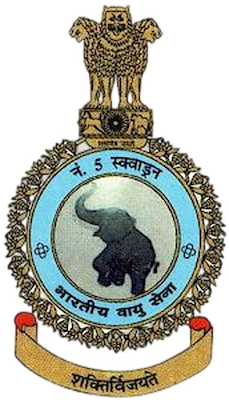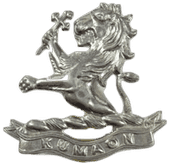NO. 5 SQUADRON

NO. 5 SQUADRON No 5 Squadron, IAF, is not one of those raised before Independence due to the fact that 5 Squadron of the Royal Air Force was based in India, from 1920 until the very eve of Independence in 1947 and the colonial authorities felt that to have another squadron in India with the same number would have caused confusion. No 5 Squadron of the Indian Air Force was raised only in late 1948. It took on charge the first of a number of formerly American-owned (but British-operated) Second World War-era heavy bombers that were being restored to flying condition in India. The emblem of No 5 Squadron Air Force is a fully grown Asian wild elephant. The mighty 'Tusker' with raised trunk is shown trumpeting before the charge symbolising the enormous strength that could be harnessed in order to impart crushing blows. Its motto is ‘Shaktir Vijayate’ meaning ‘Strength is Victory’.

